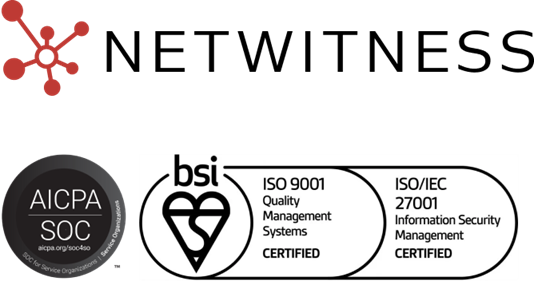What is Web Security?
Web security is the comprehensive practice of protecting networks, servers, websites, and web applications from cyberattacks, unauthorized access, and data breaches. This discipline encompasses multiple layers of defense including cloud web security, network and web security controls, and specialized web security solutions designed to safeguard online assets and digital operations. Understanding web security fundamentals and implementing robust website security measures is essential for maintaining business continuity and protecting sensitive information in increasingly interconnected digital environments.
Web security involves implementing technologies, processes, and policies to protect web-based systems from exploitation and malicious activities. This includes website security measures that defend individual sites, web application security controls that protect software functionality, and cloud web security solutions that safeguard cloud-hosted resources and services.
Modern web security solutions address threats across multiple vectors, from network traffic analysis through web security gateways to application-level protections that prevent code injection and data theft. Organizations following OWASP (Open Web Application Security Project) standards benefit from industry-recognized frameworks for identifying and mitigating common web vulnerabilities.
Synonyms
- Cybersecurity
- IT Security
- Digital Security
- Internet Security
- Network Security
- Information Security
Why Web Security Matters
Failing to implement comprehensive web security can result in data breaches, operational downtime, regulatory penalties, and severe reputational damage. Key reasons web security solutions are critical include:
- Business Continuity: Preventing attacks that could disrupt websites, applications, and entire network infrastructures from functioning properly.
- Data Protection: Safeguarding sensitive customer information, payment systems, and proprietary business data from theft or exposure.
- Compliance Requirements: Meeting regulatory standards and industry frameworks like OWASP that mandate specific security controls and practices.
- Trust Preservation: Maintaining customer confidence and brand reputation by demonstrating commitment to protecting user data and privacy.
Effectively implementing network and web security measures ensures organizations can operate digital services safely while minimizing exposure to evolving cyber threats.
How Web Security Works
Web security solutions typically employ multiple defensive layers:
- Perimeter Defense: Web security gateways filter incoming and outgoing traffic, blocking malicious requests before they reach protected systems.
- Application Protection: Web application security controls validate inputs, sanitize data, and prevent exploitation of coding vulnerabilities.
- Continuous Monitoring: Vulnerability security scanning tools regularly assess systems for weaknesses and configuration issues requiring remediation.
- Access Control: Authentication and authorization mechanisms ensure only legitimate users can access protected resources and sensitive data.
- Threat Intelligence: Real-time updates about emerging attack patterns enable proactive defense against new exploitation techniques.
Types of Web Security Technologies
- Web Security Gateway: Network security appliances that filter traffic between users and internet resources, blocking malicious content and enforcing security policies.
- Web Application Firewalls (WAF): Specialized solutions that monitor, filter, and protect web applications from attacks like SQL injection and cross-site scripting.
- Cloud Web Security: Services that protect cloud-hosted applications and data through encryption, access controls, and threat detection capabilities.
- Vulnerability Security Scanners: Automated tools that identify security weaknesses in websites, applications, and network configurations.
- Next Gen Secure Web Gateway: Advanced platforms combining traditional gateway functions with cloud-delivered security services and threat intelligence.
Best Practices for Web Security
- Follow OWASP Guidelines: Implement Open Web Application Security Project recommendations for addressing the most critical web application vulnerabilities.
- Regular Security Assessments: Conduct frequent web security checks using vulnerability scanners and penetration testing to identify weaknesses.
- Implement Defense in Depth: Deploy multiple security layers including web security gateways, application firewalls, and endpoint protection.
- Maintain Current Patches: Regularly update all web servers, applications, and security tools to address newly discovered vulnerabilities.
- Encrypt Sensitive Data: Use strong encryption for data in transit and at rest, especially for authentication credentials and payment information.
Related Terms & Synonyms
- Cloud Web Security: Security solutions specifically designed to protect cloud-hosted websites, applications, and services.
- Web Security Solutions: Comprehensive platforms and tools designed to protect websites and web applications from cyber threats.
- Website Security: Specific practices and technologies focused on protecting individual websites from attacks and unauthorized access.
- Network and Web Security: Integrated security approach combining network-level protections with web-specific defensive measures.
- Web Security Gateway: Network appliances that filter and inspect web traffic to prevent threats from reaching internal systems.
- Web Security in Network Security: Integration of web-specific protections within broader network security architectures and strategies.
- Web Application Security: Specialized discipline focused on protecting web-based software applications from exploitation and attacks.
- Vulnerability Security: Processes and tools for identifying, assessing, and remediating security weaknesses in web systems.
People Also Ask
1. What is web application security?
Web application security is the practice of protecting web-based software applications from threats like SQL injection, cross-site scripting, and authentication bypass through secure coding practices, input validation, and runtime protection mechanisms.
2. What is a web security gateway?
A web security gateway is a network security appliance that sits between users and the internet, filtering web traffic to block malicious content, enforce security policies, and prevent threats from reaching internal networks and systems.
3. How to secure a web server?
Secure web servers by keeping software updated, implementing strong authentication, configuring firewalls, enabling encryption, removing unnecessary services, conducting regular vulnerability scans, and following security hardening guidelines.
4. What is next gen secure web gateway?
Next gen secure web gateway is an advanced cloud-delivered security platform that combines traditional web filtering with integrated capabilities like cloud access security, data loss prevention, and advanced threat protection.




